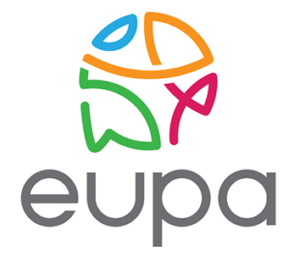International Day of Disaster Risk Reduction
This Friday is the International Day of Disaster Risk Reduction, which the UN started 34 years ago. It is a day to promote risk-awareness, to celebrate the steps that people and communities worldwide are taking to reduce their exposure to disasters and reflect on advancements in Disaster Risk Reduction.
What is Disaster Risk Reduction?
The term ‘Disaster Risk Reduction’ (DRR) refers to the actions taken before a hazard occurs to reduce the impact of the hazard on the affected communities and thereby avert disaster – it’s called preparedness. Natural hazards are events like earthquakes, floods, droughts, and cyclones. Disasters often follow natural hazards. A disaster’s severity depends on how much impact a hazard has on a society and the environment and so DRR practices aim to lessen the impact by improving hazard preparedness.
There are many ways in which this can be improved. Strengthening social protection systems to facilitate timely assistance, implementing measures to divert flood water, planting drought-resilient crops, and increasing water storage capacity to maintain water supply in times of drought are all examples of disaster risk reduction. (dfat)
The Growing Importance of DRR
The need for such actions is more pressing than ever as the risk of disasters caused by natural hazards is rising due to Climate change and the lack of disaster preparedness. The number of climate-related natural hazards has almost doubled in the last 20 years compared to the previous 20 years. The summer of 2023 was the hottest on record worldwide.
Even if the global community meets the 2015 Paris Agreement targets and restricts global warming to below 2°C and ideally to 1.5°C, many communities will still experience the severe impacts of a changing climate in the coming decades. According to a 2022 report, the global population exposed to flood is expected to rise by 24% in the case of a 1.5°C increase in global temperatures. This means that while we tackle the causes of climate change, we also need to minimize its impact by expanding DRR practices.
DRR in Refugee Camps
MOAS has been building a reputation for solutions-orientated Disaster Risk Reduction since 2019. We are active in refugee camps and deliver Flood and Water Safety Training as well as Fire Response Training to refugees and volunteers from the host community.
Refugee camps are very prone to disaster following a hazard due to their remote location, temporary shelters, and densely populated inhabitants. The dangers of fire are multiplied by the cramped living spaces, flammable shelters made from bamboo, and lack of proper structures to manage fire. A fire in an informal settlement can affect thousands of people, causing destruction and a long-term impact on their livelihoods.
The inhabitants of refugee camps are also particularly vulnerable to flooding. Camps are temporary and therefore, drainage is a low priority. Deaths caused by water-related disasters have more than doubled in the last 10 years. In a monsoon-affected country such as Bangladesh, drowning is the leading cause of death for children and approximately 17.000 lose their lives to it each year because of the lack of proper water safety awareness.
About 1.1 billion people – nearly one-seventh of the global population – live in slums or slum-like conditions. Over the next 30 years, an additional 2 billion people are expected to live in such settlements. Given these large numbers, it is essential that DRR practices are implemented and expanded in slums and refugee camps.
MOAS on International Day of Disaster Risk Reduction
MOAS provides partner organisations with technical advice and consultancy services to develop DRR and foster resilience in refugee camps. MOAS’ specialists have developed training especially for the camp setting and unique tools to respond to the issues posed by water and fire in refugee camps worldwide.
In the training, attendees learn how to respond to fire and water hazards to save lives. MOAS provides throw bags and information on rescue techniques as well as water tanks and pumps, so volunteers can save people from drowning. 45 tuk-tuks have been converted into firefighting units last year alone. As of the end of 2022, we have provided nearly 7000 volunteers with water safety training and equipment, and more than 2500 volunteers were trained in fire safety. All this is done with the support of international organisations on the ground and our local partners.
We are currently expanding our training to include household-level fire prevention to minimize the risk of fire outbreaks. Volunteers will be trained on safe cooking measures, including household safety measures from fire.
Final thoughts
Thanks to this training and the equipment we provide, refugees and host community volunteers are prepared to minimize the impacts of fire and water hazards when they occur. MOAS is dedicated to continuing and expanding these DRR activities to improve the safety and resilience of vulnerable people worldwide.
If you are interested in the work of MOAS and our partners, please follow us on social media, sign up for our newsletter and share our content. You can also reach out to us at any time via [email protected]. If you want to support our operations, please give what you can at www.moas.eu/donate.


